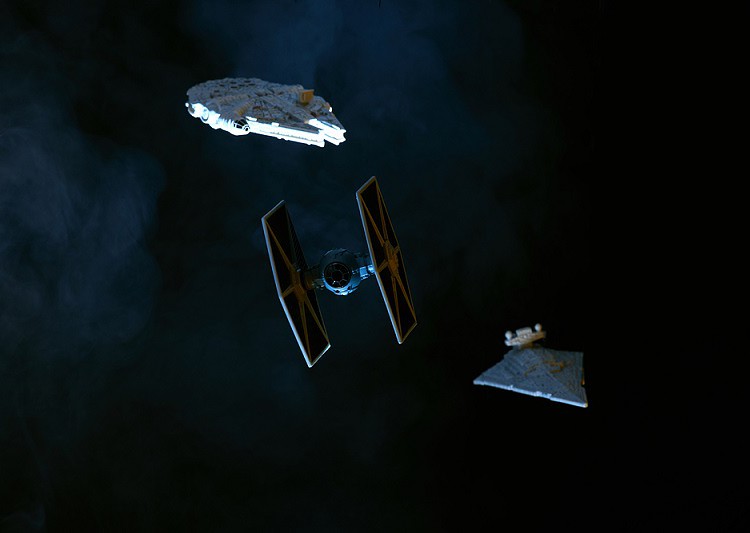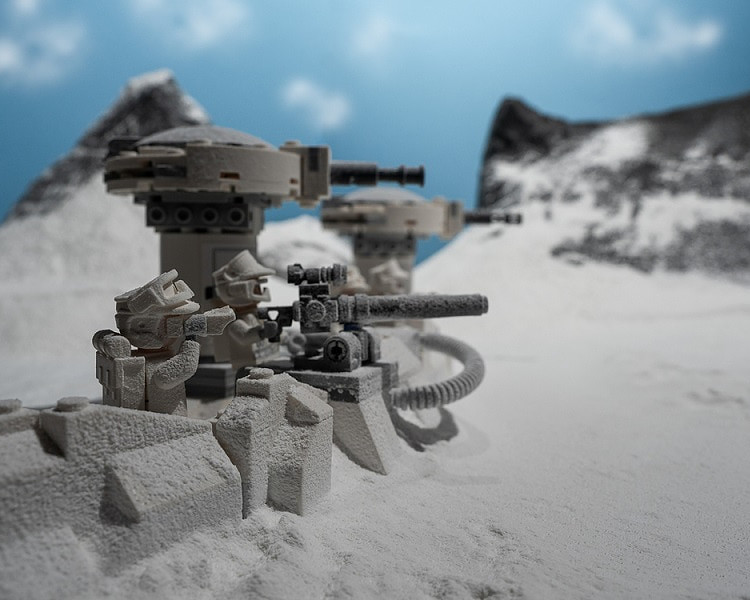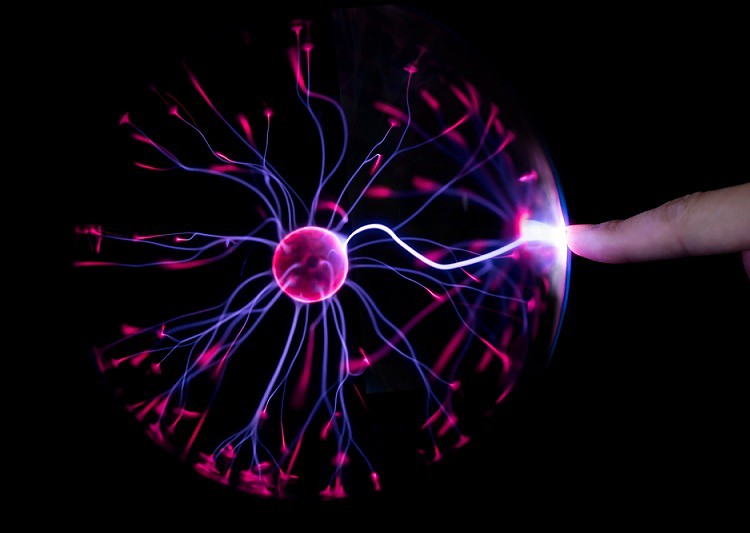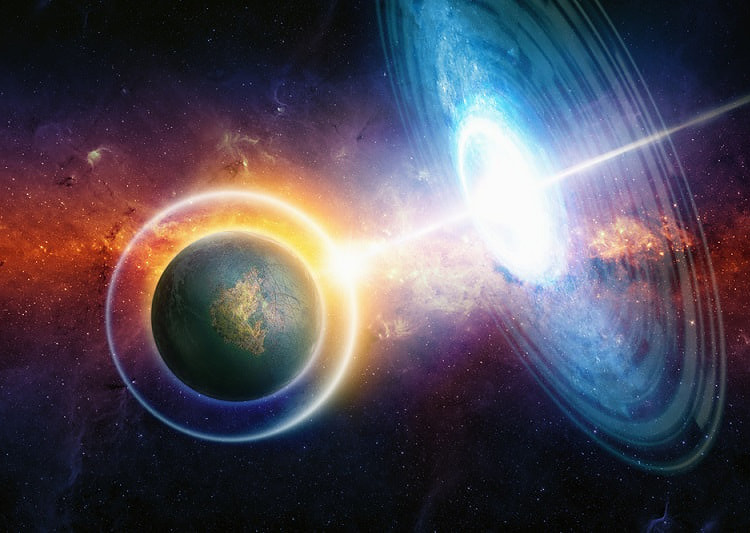Star Wars shields are found in all of the major films and provide much-needed protection to starships, planets, droids, and humans.
When we refer to shields in Star Wars, we are mainly talking about deflector shields. There are two main types of deflector shields, and the technology behind them is energy-based and could become a reality in our world.
Types of Star Wars Shields

Star Wars has two main types of shields. The first is the ray deflector shield that protects against blaster and laser cannons. These shields defend against higher energy attacks.
The second is a particle deflector shield that is deployed for direct attacks from objects such as asteroids or other debris.
Larger ships such as Star Destroyers use both kinds of shields, but smaller starfighters usually only make use of ray shields.
Deflector shields consist of transparent or translucent energy fields that are created by generators. These generators can be placed in multiple areas, including on starships, planets, and droids.
For example, the Gungan shield used during the main battle on the planet Naboo is a ray shield, and so was the Death Star’s thermal exhaust port.
The Droidekas had built-in ray shield projectors around them that made them extremely difficult to defeat.
Planetary shields combine both ray and particle shields for defensive purposes.
The main purpose of both types of shields is to deflect laser fire or other assaults and protect ships, technology, areas, and planets.
How Do Star Wars Shields Work?
Shields work in Star Wars through a generator that requires a power source. In The Empire Strikes Back, the Rebels used the DSS-02 generator to power shields to protect Echo Base until AT-AT Walkers destroyed it.

This shield generator was powered by main reactors, or a centralized power system, in Echo Base that had been stolen from a battle cruiser.
Ray shields, like that on Hoth, work not by deflecting a blast of energy, but by absorbing it. The degree of power a ray shield has is reflected in how long it can withstand fire before being recharged or destroyed.
Shields operate similarly as conductive materials do. Energy is diffused and radiated back out around them and also absorbed.
On Star Destroyers, two deflector shield generators rested on the top of the ship to provide the first level of defense. These generators needed much power to work and employed both particle and ray shields.
Various shields serve specialized purposes and work slightly differently.
For example, shift shields were used by ships to navigate through hyperspace by protecting them from space matter. A relativistic shield is also used in hyperspace to protect against time dilation effect.
Einstein revealed the time dilation effect with his theory of special relativity, where time slows down for a traveler who goes close to lightspeed. A relativistic shield balances out the time difference between those inside and outside of a spaceship.
Deflector Shield Technology
Deflector shields are among the many technology items that Star Wars showcases. This technology draws on the concept of force fields.
Force fields consist of several different forms of energy, including electromagnetic fields, dark energy, plasma, and quantum fields.
In Star Wars, deflector shield technology coincides with such areas as gravitational technology. Tractor beams are a prime example of gravitational technology.
Tractor beams are force fields that pull in ships, such as the Millenium Falcon in A New Hope. Deflector shields and tractor beams are part and parcel of large ship technology.

Shield generators represent the technology that powers deflector shields. The military-grade generators were coveted items by the Rebels.
How Strong Are Star Wars Shields?
The strength of a deflector shield depends on the type.
Star Destroyers reflect that shields can be very strong. These shields can take direct hits from asteroids, which amount to megatons per object.

In direct battle, however, that strength lessens. When fighting the Mon Calamari battlecruisers during the Battle of Endor in Return of the Jedi, Star Destroyers’ shields began to lose strength after about 30 minutes.
The Death Star 2 had one of the strongest shields and was powered by a generator located on Endor.
On the opposite end, personal shields provide protection but are not as strong as ship shields. For example, the Mandalorian melee shield helped protect against attacks but did falter after too much damage was inflicted.
Fans have made the comparison that Star Wars shields are comparable to armor in World War II.
The personal shields in both situations are strong enough to protect from debris and non-direct strikes, but not able to defend against direct hits for a sustained period.
Deflector Shields in Real Life
In 2014, some college students published a paper about making a deflector shield in real life. They devised a method for how plasma could create a barrier around a ship to deflect energy in a way that was similar to Star Wars.
This paper ran parallel to how communication signals are currently reflected off plasma in the ionosphere (upper atmosphere).
Deflector shields in real life focus on the use of plasma and lasers. The Plasma Acoustic Shield System (PASS) is a good example.

Developed by the military, PASS was designed to shield soldiers by making a flashing wall of light. Yet, it could also be developed into a shield that could absorb laser blasters.
Boeing Company also worked on a force field system meant to protect military vehicles against shock waves from explosions.
Unlike Star Wars, this deflector shield does not protect against lasers or other energy weapons. But like Star Trek, Boeing can lay claim to the phrase “Shields up!”
Similar deflector shields are thus underway in real life. Work in plasma physics and electromagnetism appear to be the most promising directions but have yet to produce something equivalent to Star Wars deflector shields.
Star Wars Shields
Deflector shields are the primary shields in Star Wars. Although we do see a variety of shields in the movies, we are mainly referring to ray and particle deflector shields.
Deflector shields help protect starships in space and are powered by generators. They work by absorbing laser blasts and other energy attacks.
This technology has been explored in our world. Yet, it will take some time to bring Star Wars shields to Earth.

